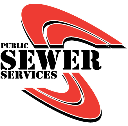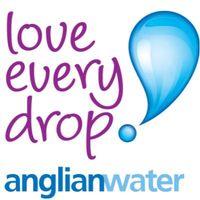Title Page
-
Site conducted
-
Prepared by
-
Audit Date
-
Location
-
Jetting Engineer
-
Engineers Line Manager
-
Vehicle Registration
-
1. Fill out required fields and answer other questions as needed.
2. Add photos and notes/comments by clicking on the paperclip icon.
3. To add a Corrective Measure, click on the paperclip icon then click on "Add Action". Provide a description, assign to a member, set priority and then set the due date.
4. Complete audit by providing a digital signature. -
6 RED
Unsafe Condition, act or omission very likely to cause significant accident
-3 AMBER
Unsafe condition etc as "-6" but unlikely to cause a significant accident but still does not meet statutory requirements.
2 GREEN
Safe condition and work practices observed with only minor discrepancies. Meets statutory standards.
3 GREEN
Sand condition and work practices observed and to a high or best practice standard.
NA
Item is not applicable to this site at the time of the inspection.
NC
Item may be applicable but was not or could not be checked (not practicable)
Vehicles
-
1. Site traffic management, vehicle control & pedestrian safety
-
Site traffic management, vehicle control & pedestrian safety
Have separate pedestrian, vehicle access points and routes around the work area been provided? If not, are vehicles and pedestrians kept separate wherever possible?
Are pedestrian routes adequately signed?
Have turning points been provided to minimise the need for reversing?
Are vehicles maintained; do the steering, handbrake, footbrake and warning devices work properly?
Have drivers received proper training?
Are vehicles securely loaded?
Are passengers prevented from riding in dangerous positions?
Are visiting vehicles adequately controlled?
Segregation of vehicle / pedestrian routes by rigid barriers (not Netlon on road irons or similar)? -
2. Are there adequate flashing roof beacons fitted and in good working order.
-
Are there beacons at the front and rear of the vehicle?
Has the drive put the beacons on?
Are they visible day or night?
Do they need replacing?
Plant and Equipment
-
3. Is the jetting unit in good condition?
-
Is the unit sounding unhealthy and giving out more noise than it should be?
Are fumes being emitted into the van?
Are there any leaks (Oil, fuel, Anti-freeze)? -
4. Does the jetting hose comply with WJA guidance?
-
Are there metal breading showing?
Has the rubber otter layer been damaged or rubbed away?
Is there a leader hose and over 3m long and a different colour?
Does the hose look like it’s been stretched? -
5. Has the Hose checklist been completed?
-
6. Is a tiger tale being use? If not why?
- Yes
- No
- N/A
- N/C
-
7. Are operatives trained to operate the plant on site.
Emergency Arrangements
-
8. Does the engineer have on their person a G7c Lone Working Device?
-
9. Is the engineer competent in using the G7c Device?
-
Ask the engineers question about the device.
Do they know what blue flashing lights mean on the device?
Do they know how to make an SOS alert?
Do they know when the device is connected to the portal?
How to silence an alarm? -
10. Is a suitable First Aid Box on their van (including eye wash)
-
Has the first aid box got adequacy stock (Plasters, bandages, slings, eye wash?
Check that the items are in date?
Is the first aid box easy to get to? -
11. Is there a fire extinguisher on the vehicle. Has the fire extinguishers been serviced yearly?
Welfare / Hygiene & PPE
-
12. Are washing facilities available
-
Is soap available to the team?
Does the handyman supply hot water?
Can the engineer dry their hands?
Hand sanitizer available? -
13. Do all operatives carry a Leptospirosis card (RAT CARD)
-
14. Is the team aware of the process for reporting accidents / near miss
-
Do they know how to use the PSS NET adverse event ?
Do they know the difference from a near miss and an accident? -
15. Personal Protective Equipment (PPE) worn?
-
Do PoWRA take proper account of the hierarchy of protection (ERIC PD) to explore alternative work methods to reduce dependence on PPE?
Do RAMS state the exact PPE required for the task?
Has adequate personal protective equipment been provided?
Is suitable clothing provided for those who have to work in wet, dirty or otherwise adverse conditions?
Is the PPE in good condition fit for the purpose and the wearer? -
16. Noise / Vibration (Hand Arm Vibration Syndrome, personal protection)
-
Have workers been briefed on the dangers of excessive noise and vibration?
Are the exposure limits for vibrating equipment adequately communicated to the workforce?
Is suitable hearing protection provided and worn in noisy areas?
Is all plant marked with vibration exposure limit? -
17. Manual handling, MSD awareness and prevention
-
Has the risk of manual handling injuries been assessed?
Have all operators received manual handling awareness training?
Have operators been trained in kinetic lifting techniques?
Confined Space
-
18. Is a confined space being carried out? if so, are or the correct procedures being carried out?
-
Is entry into confined space avoided, if at all possible, where it is reasonably possible to carry out the work by other means?<br>Has consideration been given to reducing the risk by providing forced ventilation, improving access and egress?<br>Are there arrangements to deal with emergency situations?<br>Are all members of the team trained in confined space entry's?<br>Are Gas monitors in date and being worn?<br>Does a permit need to be completed?<br>Has the HAS-MA-007 (B) Appendix A – Classification been completed
Risk Assessment & Method Statements
-
19. Has a PoWRA been completed?
-
Has the PoWRA Been Completed?
Have specific hazards been identified and appropriate control measures put in place?
Do the team know how to access the specific RAMS on PSS NET?
Environmental and COSHH
-
20. Care taken to prevent damage / contamination to paving / Tarmac / grass etc from fuel, oil and anti freeze?
-
21. Are chemicals and fuel been correctly stored?
-
22. Is a spill kit present in the engineers van? and do they know how to use it?
-
Other
-
Add signature
-
Has the audit been completed?







